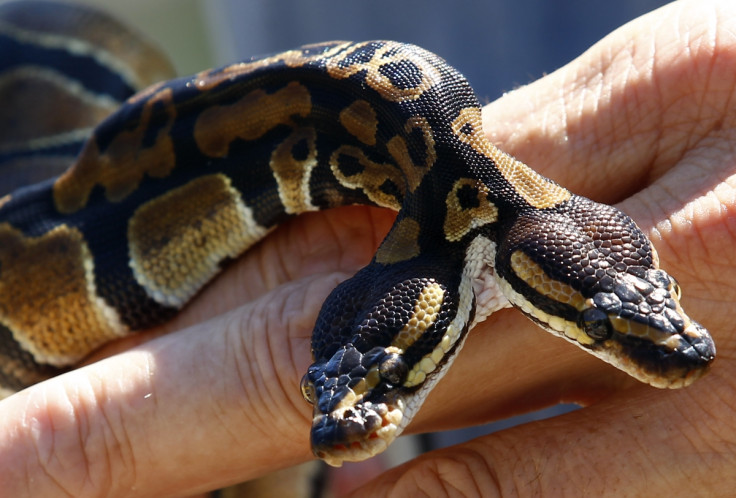Two-Headed Calf Born in Moroccan Mountains Named 'Happy New Year' [VIDEO]

The bizarre double-headed cow was named Sana Saida, which means 'Happy New Year' in Arabic.
Since its birth on 30 December, the polycephalic (having more than one head) calf has attracted media attention, with hundreds flocking to the north Moroccan village of Sefrou, to look at the unusual animal.
The calf was supposed to be a twin, but the eggs did not separate as they should have done, according to a vet.
Despite its unusual appearance, Sana Saida is capable of eating from both its mouths.

Cases of polycephaly are rare but there have been other cases in recent years. Last year, a New Zealand farmer delivered a stillborn calf that had eight legs, four ears, two bodies and one head.
In January 2011, a two-headed cow was born in Georgia. The farmer said that the animal could also eat with both heads.
Last year, farmers in Oklahoma witnessed the birth of a six-legged calf, whose extra limbs were attached to the cow's back.
Another similar medical condition called Dicephaly, occurs when identical twins fail to fully split off from each other while developing in the womb. Sharks have been found with two heads, including blue sharks and rope sharks.

A condition called diprosopus, where animals are born literally two-faced, duplicates certain features. Unlike two-headedness, this condition does not result from partially fused twins. It is caused by problems at the embryonic stage of development connected to a protein signal called sonic hedgehog homolog, or SHH.
The condition is rare, yet occurs often enough in cats to earn them the special title of "Janus cats," after the two-faced Roman god.
Janus cats often die young, but one, called 'Frank and Louie' by his owners, is now 13 years old. He is in the Guinness Book of Records as the oldest living cat with disprosopus.
Watch video of the two-headed calf called Happy New Year
© Copyright IBTimes 2025. All rights reserved.




















